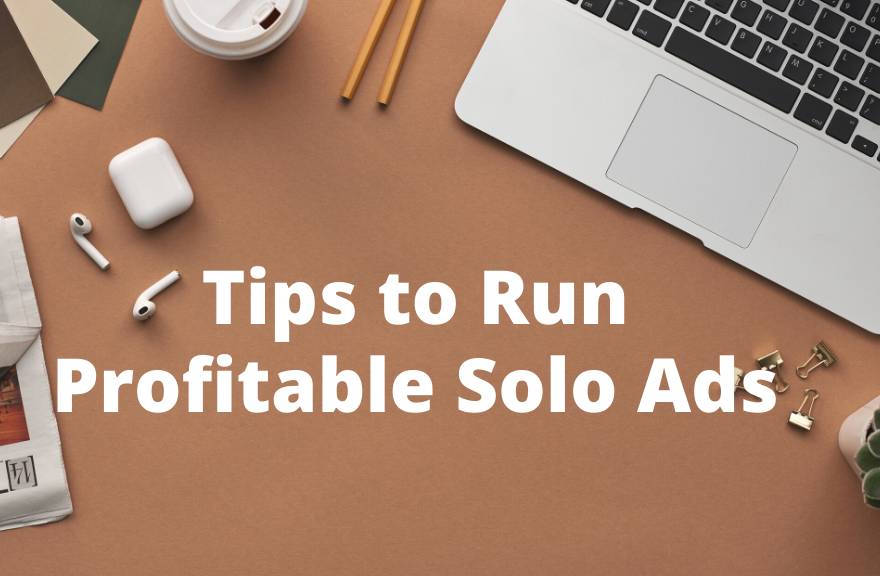Let’s start by saying solo ads are a fast and affordable way of driving traffic to your business. It’s one way that new businesses have been able to achieve exponential growth. So if you’re looking to get the word out there really fast, or just trying to scale through those difficult years of early business, you should really consider using solo ads.
What Are Solo Ads?
It’s a common term among affiliate marketers, but it’s forgivable if you’re new to the scene and don’t know what it actually means.
Solo ads are email-based marketing campaigns run on other people’s email lists. You, your business, or your specific offer will be the only thing projected in such emails. The adverts then drive traffic directly to your sales funnel or, at least, your website’s landing page.
Here’s a simple scenario of how solo ad campaigns are run…
Let’s say Jake recently launched a dating blog. He has been out there churning several phenomenal contents and even asked people to leave their emails for notification on new exciting posts and tips. It’s been three months and he has had 42 emails. A good return, right? But he feels he can do even more. He hopes to grow his email list in other to sell his new eBook.
Jake then takes some time to thoroughly research some of the top guns in his niche and finds Tom. Tom has been running a dating and hookup site for about 8 years and has thousands of emails on his list. Tom is ready to send out emails convincing his audience to look out a free eBook Jake has written. There’s a link attached to the email which sends them straight to a page that requests for their emails so Jake can send them “Surefire Tips to Land the Lady Out Of Your League.” Some of Tom’s audience is excited and click on it. Jake will pay a certain amount to Tom for each click. These clicks are then converted to leads and if everything goes as planned, they convert and Jake makes money.
This is a typical illustration of how solo ads work. Depending on the agreement though, payments may either be run based on the number of emails sent or the number of clicks generated.

Solo ads have proven to be truly effective and that’s why they’re still in use. However, some companies who have had bad experiences with solo ads have an awful lot of things to say about this strategy.
From my years of experience, I have found that solo ads fail for one of two reasons. I will no only tell you these reasons, I will show you a solution to each of these problems so you have a smooth ride. Amazing, right?
Solo Ads fail when:
- The Ad copy is poorly written.
- The list wasn’t properly generated or targeted.
I keep my word, so I’ll give you tips on how to run super-effective and highly converting solo ads.
How to Run Successful Solo Ads.
- Engage the Readers at First Glance: Attention spans are getting increasingly low in the ever-busy internet. Worse still, emails are usually saturated with lots of unwanted stuff so why should they read yours? Hook them! Right bold, catch email subjects that will get them to click on the email, then make the following lines worth reading. Email traffic is cold traffic. Even colder when it’s not your audience. Your aim should be to warm them up to you so they can at least click. Once they’re in your funnel, you can then heat them up and get them ready to buy. You may read up some copywriting basics or hire the services of a dexterous (freelance) copywriter to get this part of the job done.
- Maintain Simplicity: I can’t stress this enough. Most writers get lost in the euphoria of sounding creative with figures of speech. The result? They end up boring or confusing their readers. What you should do is keep your sentences short. The entire body of the email shouldn’t look like work to them. Utilize white spaces and keep it at about three paragraphs long. Punctuations should be used carefully to aid understanding. And, finally, the language should be understandable to an 8th grader.

- Don’t Get Too ‘Salesy’: I know you badly want to get them through your sales funnel. That’s not bad! Just don’t make it obvious to your audience. For instance, it’s essential to include a link to your opt-in page on the email, but don’t try to force it down their throats. Some marketers fill their emails with links to their websites hoping the client will click intentionally or accidentally. Turns out this approach is usually counter-effective. It distracts readers from the crux of the issue and makes them perceive you as desperate – that’s not good at all.
- Ensure the Authenticity and Specificity of the List: While each of the aforementioned tips are targeted towards the first problem mentioned, this is a solution to the second. It’s arguably the most relevant tip on the list and will either make or mar your campaign. First of all, the big risk is that you’re mostly dealing with individual solo vendors. Some may be fraudulent and only interested in milking you dry. Some vendors have accrued their list via unconventional ways and have no interaction with them. It goes without saying that such lists will be unresponsive and won’t convert. Experts have recommended several ways of ensuring you don’t fall into the wrong hands when choosing an email vendor. Most of the advice online center around trial and error methods, but it doesn’t always have to be so…
- Use Udimi: This is a surefire, fail-proof tip for successful solo and campaigns. Udimi serves as a middleman between you and the email vendors. This saves you time, energy and money. If you want to save yourself the pain of paying for fake or useless traffic, use Udimi. You get direct contact with the traffic provider, and several other detailed information about the vendor so you can never go wrong.
There you have it guys. You can run your solo ad campaign and grow your business for a fraction of what you should have spent on other regular marketing campaigns. Don’t sleep on it!



